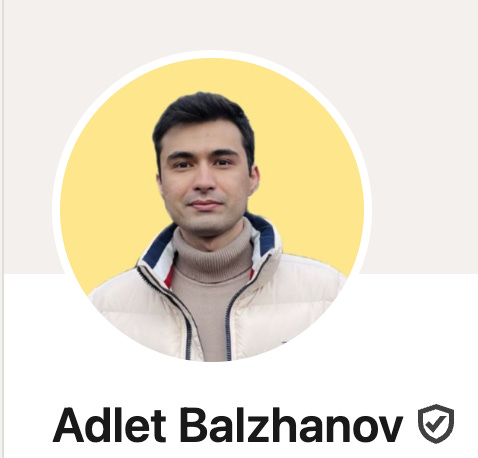make your LinkedIn not cringe
level up your LinkedIn as a founder/dev/engineer
A few months ago, I got a message from a recruiter at Meta (previously Facebook). It wasn’t about a specific role. It just said: “Been following your work for a while. Would love to connect and chat.”
That line hit me. Not because of the opportunity, but because of the “Been following your work.” This wasn’t magic. And it didn’t happen overnight.
If you’re a software engineer and you’re not taking your personal brand on LinkedIn seriously, you’re just skipping changes.
Well, then how to build a personal brand on LinkedIn that actually gets you noticed?
Why Bother?
Here’s the harsh truth:
You can be incredible at your craft and still invisible.
The best jobs don’t always go to the best engineers.
They go to the ones who are visible, trusted, and easy to say yes to.
LinkedIn isn’t just a job board. It’s a living, breathing proof-of-work platform.
It’s where hiring managers, founders, VCs, and your future co-founder are already looking. And judging.
Having a solid LinkedIn presence doesn’t mean posting daily threads about microservices. It means:
Making it easy for someone to quickly understand what you’re great at
Giving people a reason to follow your journey
Signaling to the right people
Let me break it down, part by part — practical, doable steps you can take this week. Not saying my profile is perfect, but I’ll use the power of being the author of this post and share some examples from it :D
1. Profile Picture
This is your digital handshake.
No pixelated selfies. No conference badges. No sunglasses.
✅ Use a clean, high-resolution headshot
✅ Wear what you’d wear to a casual interview
✅ Look approachable, not like you’re trying to sell crypto
Not wearing black and white, but I think it looks good though.
2. Headline
Most people just put: “Software Engineer at Company X.”
That’s fine. If you want to be invisible.
Instead, tell people what you do and why it matters. Think value, not title.
Better:
Building reliable systems at scale | Go, Kubernetes, AWS | Obsessed with clean code & shipping fast
Or:
Senior SWE | Founder of The True Engineer newsletter (2K+ subscribers) - Expert Insights and Practical Advice for Modern Developers
3. Profile Banner
This is your billboard. Use it.
Ideas:
A photo of you speaking at an event
A simple tagline (e.g. “Scaling systems, one microservice at a time.”)
Your personal website, blog, newsletter or GitHub repo
A clean graphic that reflects your tech stack
Use free tools like Canva to create something that feels personal and on-brand.
4. About Section (aka Your Origin Story)
This is where most engineers stumble. They either:
Skip it entirely
Copy-paste their resume
Write in third person like they’re a Marvel villain
Don’t do that. Here’s the move:
Write like you’re telling a friend what you do — and why you love it.
Keep it human. Here’s a structure that works:
Who you are
What you love building
What you’ve done
What excites you now
What kind of opportunities you’re open to
Example:
I climbed from New Grad to Senior Engineer in just 3 years at a Big Tech company by the age of 24. Now, I'm sharing my insights and mentorship through my newsletter (www.thetrueengineer.com)
What I Do Best
- Backend Engineering (6+ years) – Python expert, designing robust and scalable architectures
- Distributed Systems & Conversational AI – High-performance, AI-driven applications
- Competitive Programming & Math – 2x ACM ICPC Semifinalist, leveraging algorithmic thinking in real-world engineering
If you're interested in software engineering, system design, or career growth in tech, let's connect!
5. Experience Section
This isn’t your resume. It’s your highlight reel.
For each role, focus on outcomes, not tasks. For example,
❌ “Built a microservice”
✅ “Developed a fraud detection service from scratch to replace the legacy backend, resulting in an 85% reduction in the p95 latency”
Use bullet points. Quantify when possible. Mention tools, but lead with impact.
6. Content: What to Post
You don’t need to go full LinkedInfluencer.
But posting something once or twice a week is how you stay top-of-mind.
Here’s what works:
Share what you’re learning (e.g., “Spent the weekend playing with Postgres CTEs. Here’s what surprised me”)
Small wins from work (e.g., “We finally killed a flaky test. Here’s how”)
Questions you’re thinking about (e.g., “Is it ever worth rewriting from scratch? Curious how others think about this.”)
Book/code/tool recommendations
Reflections on the job hunt, interviews, or side projects
Golden rule: Write for one level behind you.
What feels obvious to you might be gold to someone a step earlier in the journey.
💡 Pro Tip: The 3-2-1 Method
Each week, aim to:
Comment on 3 posts (especially from people you admire)
React to 2 posts from companies you like
Publish 1 short post about something you learned
This keeps your account active and your name familiar — without spending hours online.
Final Thought
You don’t have to be famous.
But you do want people to associate your name with something.
Could be:
“The backend engineer who breaks down complex stuff simply”
“The dev who’s always trying new tools”
“The one who explains systems thinking with clarity”
Be intentional. Be visible. Be helpful.
Because in a world full of noise, the quiet, thoughtful voices are the ones we remember.
Until next time,
Adlet
If you'd like to connect with me on LinkedIn, just use the button below. I read every message.




Well put. Thanks for sharing
Insightful